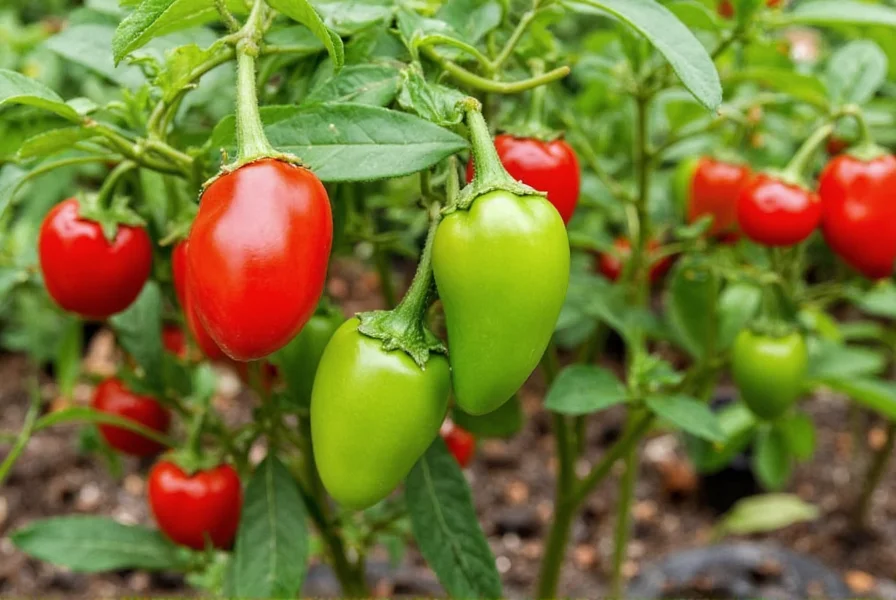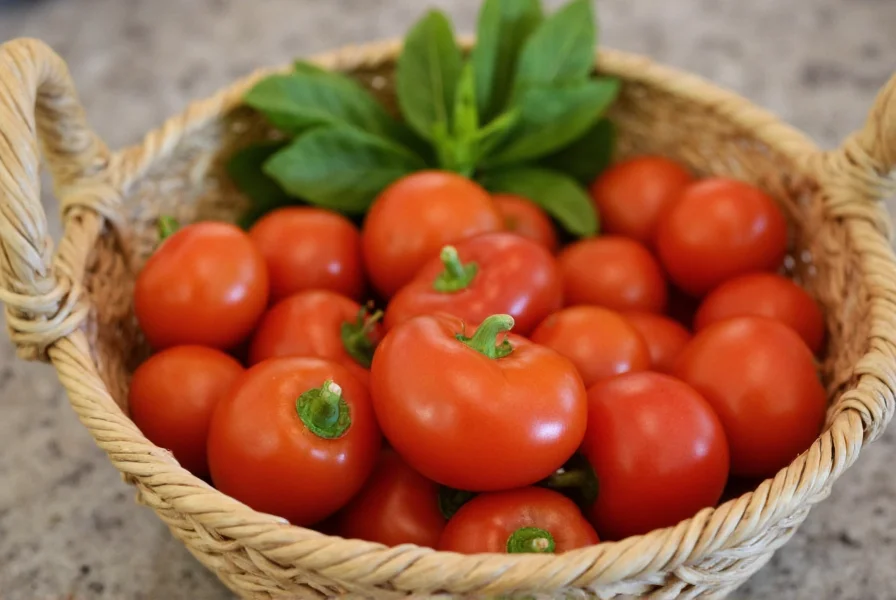Growing your own garden salsa peppers ensures the freshest ingredients for homemade salsa while providing complete control over cultivation methods. Unlike generic "salsa peppers" found in stores, dedicated salsa varieties offer consistent heat levels and flavor profiles specifically developed for optimal salsa preparation. This guide covers everything you need to successfully cultivate these flavorful peppers in your home garden.
Understanding Garden Salsa Pepper Characteristics
Garden salsa peppers represent a category of medium-heat chili peppers bred specifically for fresh salsa applications. These varieties typically fall between jalapeños and serranos on the heat scale, offering 30,000-50,000 Scoville heat units that provide noticeable warmth without overwhelming other ingredients. The best garden salsa pepper varieties share several key characteristics:
- Compact growth habit (18-24 inches tall) suitable for containers or small garden spaces
- Early maturity (65-80 days from transplant) for multiple harvests
- Abundant yields of 2-4 inch tapered fruits
- Balanced flavor profiles with citrus notes and moderate heat
- Thick walls that hold up well in both raw and cooked salsas
Unlike generic supermarket "salsa peppers" which may be random hot pepper varieties, dedicated garden salsa peppers have been selectively bred to provide consistent heat levels and flavor profiles ideal for fresh salsa preparation.

Top Garden Salsa Pepper Varieties for Home Gardens
While many pepper varieties can be used in salsa, these specifically bred options deliver the most consistent results for home gardeners:
| Variety | Heat Level (SHU) | Days to Maturity | Distinctive Features |
|---|---|---|---|
| Salsa Express | 35,000 | 65 | Early producer, uniform fruit, excellent container variety |
| Apache | 45,000 | 70 | Bright red color, thick walls, great for roasted salsa |
| Santaka | 50,000 | 75 | Ornamental and productive, vibrant color progression |
| Early Jalapeño | 2,500-8,000 | 60 | Milder option for family-friendly salsa |
When selecting varieties for your garden salsa pepper patch, consider your preferred heat level and intended salsa style. Milder varieties like Early Jalapeño work well for fresh pico de gallo, while hotter options like Apache provide more complexity for cooked salsas. For the most authentic experience, grow multiple varieties to create layered heat profiles in your homemade salsa.
Optimal Growing Conditions for Garden Salsa Peppers
Successful garden salsa pepper cultivation requires attention to specific growing conditions that maximize yield and flavor development:
Soil Requirements
Garden salsa peppers thrive in well-draining soil with a pH between 6.0-6.8. Amend garden beds with 2-3 inches of compost before planting to improve soil structure and nutrient content. Avoid high-nitrogen fertilizers which promote leafy growth at the expense of fruit production. Instead, use a balanced organic fertilizer with higher phosphorus content to encourage flowering and fruit set.
Sunlight and Temperature
These peppers require full sun exposure (6-8 hours daily) for optimal growth and capsaicin development. Soil temperatures should consistently reach 65°F (18°C) before transplanting outdoors, with ideal growing temperatures between 70-85°F (21-29°C). Temperatures above 90°F (32°C) can cause blossom drop, so consider providing afternoon shade in extremely hot climates.
Watering Practices
Consistent moisture is critical for garden salsa pepper success. Water deeply 1-2 times weekly rather than frequent shallow watering, aiming for 1-1.5 inches of water per week. Mulch around plants with straw or wood chips to maintain even soil moisture and prevent blossom end rot. Reduce watering slightly as fruits mature to concentrate flavors.

Planting and Care Schedule
Follow this timeline for successful garden salsa pepper cultivation:
Indoor Seed Starting (8-10 Weeks Before Last Frost)
Start seeds indoors in seedling trays with bottom heat (80-85°F/27-29°C). Use a sterile seed starting mix and keep soil consistently moist. Provide 14-16 hours of grow light daily. Transplant seedlings to 4-inch pots when first true leaves appear.
Hardening Off (1-2 Weeks Before Planting)
Gradually acclimate plants to outdoor conditions by increasing exposure time daily. Start with 1-2 hours of morning sun and work up to full days over 7-10 days. This prevents transplant shock and sunscald.
Garden Planting (After Last Frost)
Plant in raised beds or containers with spacing of 18-24 inches between plants. Bury seedlings slightly deeper than their root ball to encourage stronger root development. Apply balanced organic fertilizer at planting time.
Ongoing Care
- Fertilizing: Apply balanced organic fertilizer every 3-4 weeks
- Pruning: Remove first flowers to encourage stronger plant growth
- Pest control: Monitor for aphids and spider mites; use insecticidal soap if needed
- Disease prevention: Rotate crops annually and avoid overhead watering
Harvesting and Using Garden Salsa Peppers
Proper harvesting techniques maximize both yield and flavor for your homemade salsa:
When to Harvest
Garden salsa peppers can be harvested at either the green (immature) or red (fully mature) stage. Green peppers offer brighter, grassier flavors while red peppers provide sweeter, more complex notes with slightly higher heat. Harvest when peppers reach full size for their variety and feel firm to the touch. Use sharp scissors to cut peppers from the plant, leaving a small stem attached.
Salsa Preparation Tips
For the freshest garden salsa, follow these preparation guidelines:
- Wear gloves when handling hot peppers to avoid skin irritation
- Remove seeds and membranes for milder salsa; include for extra heat
- Combine with garden-fresh tomatoes, onions, cilantro, and lime juice
- Let salsa rest for 30 minutes before serving to allow flavors to meld
- Store in airtight containers for up to 5 days in the refrigerator
Troubleshooting Common Garden Salsa Pepper Issues
Even with proper care, gardeners may encounter these common challenges:
Blossom Drop
Solution: Ensure consistent watering and avoid temperature extremes. Hand-pollinate flowers on calm days by gently shaking plants to distribute pollen.
Blossom End Rot
Solution: Maintain consistent soil moisture and ensure adequate calcium availability through soil amendments like crushed eggshells or gypsum.
Pest Infestations
Solution: For aphids and spider mites, spray plants with a mixture of water and mild soap. Introduce beneficial insects like ladybugs for natural pest control.
Extending Your Garden Salsa Pepper Harvest
Maximize your yield with these preservation techniques:
- Freezing: Roast and freeze whole peppers in airtight bags for cooked salsas
- Drying: String peppers and hang in a warm, dry location for dried pepper flakes
- Canning: Preserve in vinegar-based solutions for shelf-stable salsa ingredients
- Refrigeration: Store unwashed peppers in perforated plastic bags for 2-3 weeks
By growing your own garden salsa peppers, you'll enjoy superior flavor and freshness compared to store-bought options while gaining complete control over cultivation practices. Whether you have a sprawling garden or just a sunny patio, these compact, productive plants deliver authentic salsa ingredients right outside your door.
Frequently Asked Questions
Can I grow garden salsa peppers in containers?
Yes, garden salsa peppers thrive in containers as small as 5 gallons. Choose compact varieties like Salsa Express or Early Jalapeño, use well-draining potting mix, and ensure containers have adequate drainage holes. Container-grown peppers require more frequent watering and weekly feeding with balanced liquid fertilizer during peak growing season.
How do I prevent my garden salsa peppers from becoming too hot?
Pepper heat is influenced by growing conditions. To reduce heat levels, provide consistent watering (avoid drought stress), maintain soil pH around 6.5, and harvest peppers at the green stage rather than waiting for full red maturity. Removing seeds and inner membranes before salsa preparation also significantly reduces perceived heat.
What's the difference between garden salsa peppers and regular jalapeños?
Garden salsa peppers are specifically bred for consistent heat (typically 30,000-50,000 SHU) and flavor profiles ideal for fresh salsa, while jalapeños range from 2,500-8,000 SHU and have more variable heat. Salsa pepper varieties generally have thinner walls and more citrus notes compared to the grassier flavor of jalapeños, making them better suited for raw salsa applications.
How many garden salsa peppers do I need for a batch of salsa?
For a standard 4-person batch of fresh pico de gallo, you'll need approximately 4-6 medium garden salsa peppers (about 1 cup diced). For cooked salsa, 6-8 peppers typically yield enough for 4-6 pint jars. The exact amount depends on your preferred heat level and the specific pepper variety's size and heat intensity.
When is the best time to plant garden salsa peppers?
Start seeds indoors 8-10 weeks before your last expected frost date. Transplant outdoors 2-3 weeks after the last frost when soil temperatures consistently reach 65°F (18°C) and nighttime temperatures stay above 50°F (10°C). In warmer climates (zones 8+), you can plant a second crop in late summer for a fall harvest.











 浙公网安备
33010002000092号
浙公网安备
33010002000092号 浙B2-20120091-4
浙B2-20120091-4